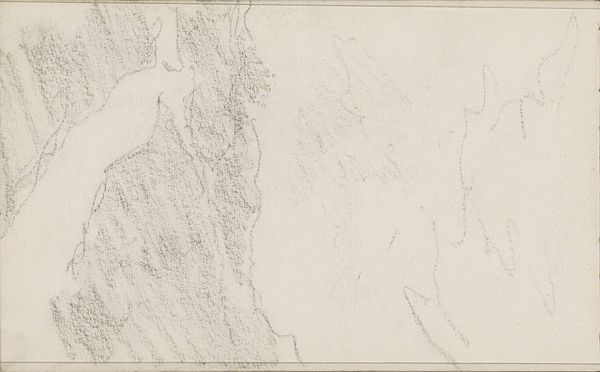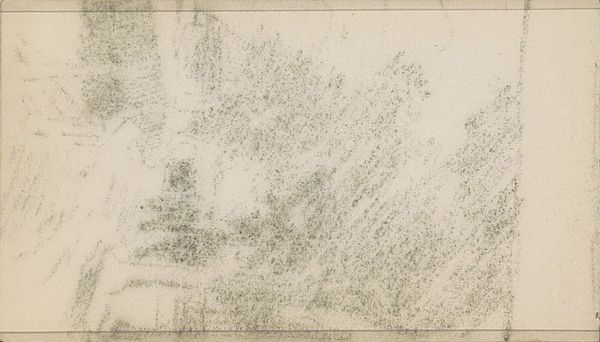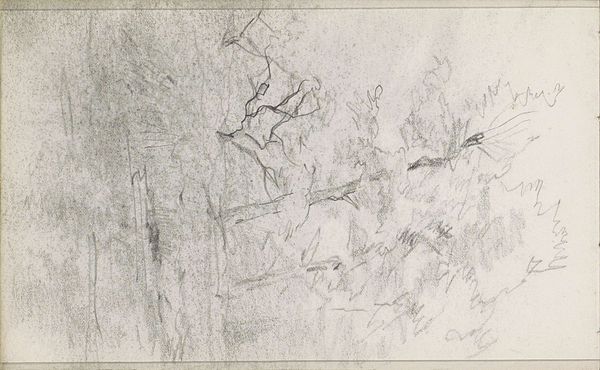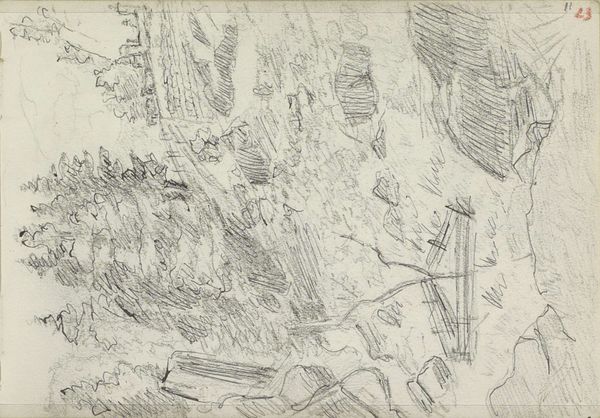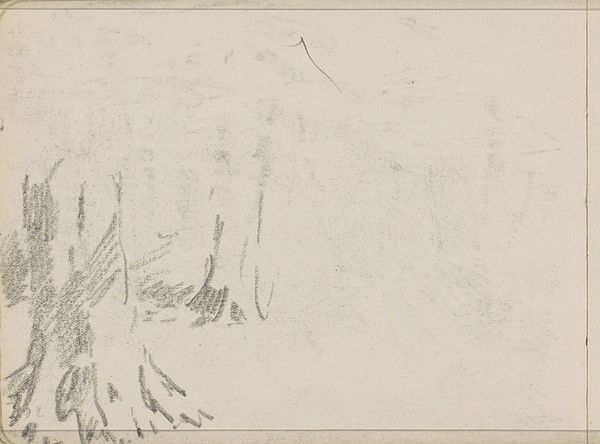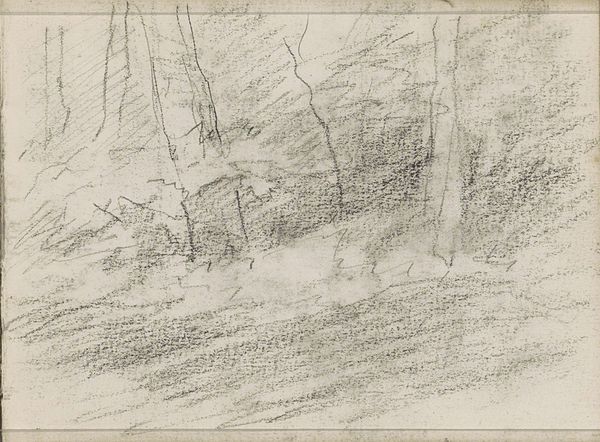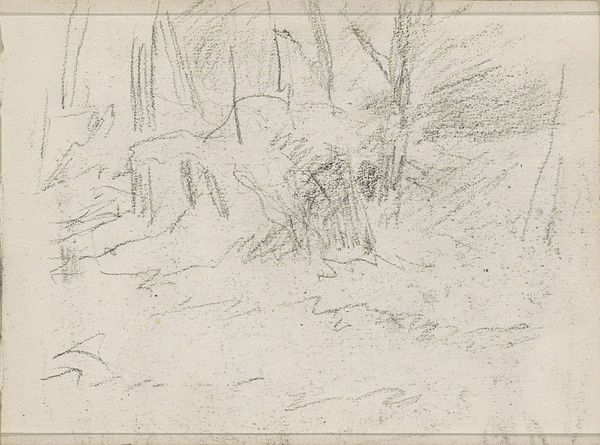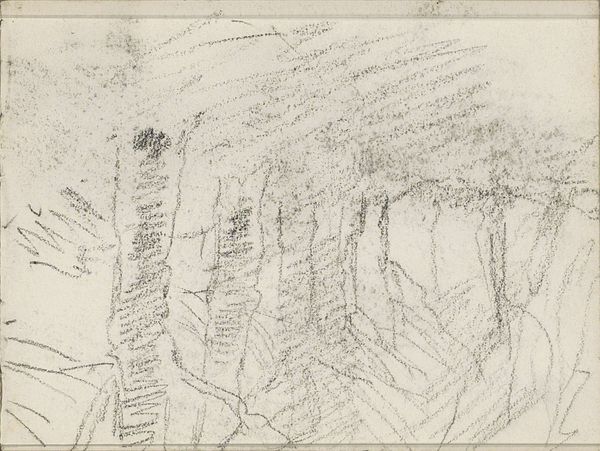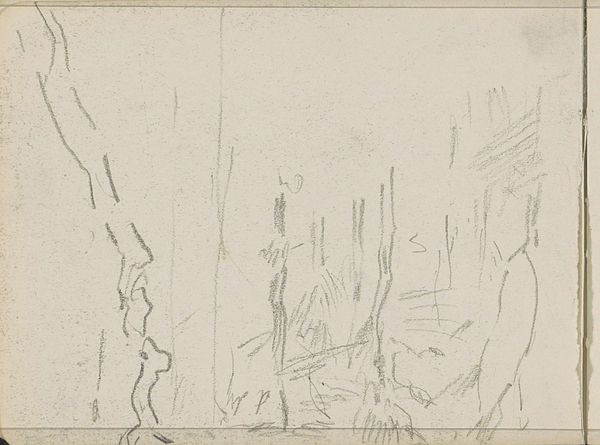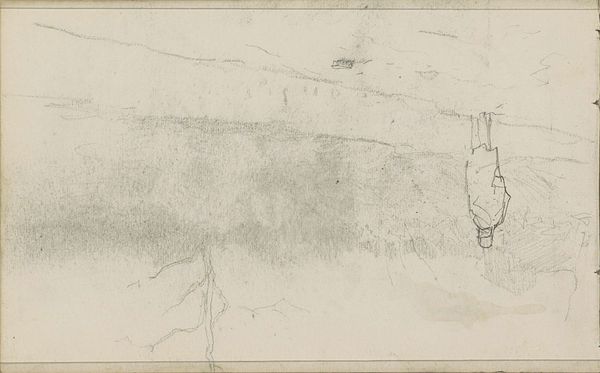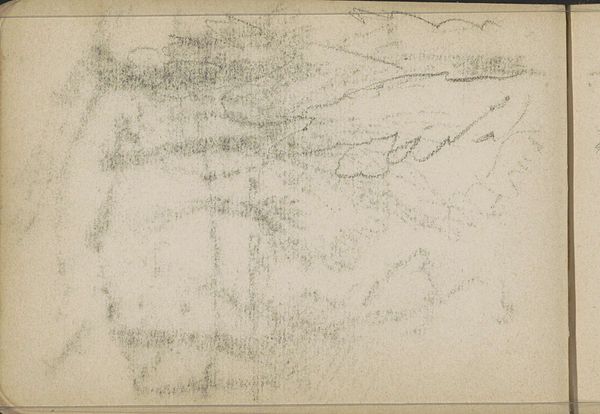
Copyright: Rijks Museum: Open Domain
Curator: Jozef Israëls' work, "Keien aan een bosrand," offers a glimpse into the late 19th-century Dutch art scene. Executed in pencil, probably sometime between 1885 and 1902, this piece exemplifies his keen eye for capturing the essence of landscape. It now resides in the Rijksmuseum. Editor: My immediate impression is of something ephemeral. The soft graphite gives the scene a dreamlike quality, as though the stones and trees are dissolving into the mist. Curator: The beauty of this sketch lies, perhaps, in its unfinished quality. This unfinished nature grants us insight into Israëls' working process, reflecting the material conditions of artistic production. The labor embedded in the creation. Editor: Absolutely. You see the artist grappling with the weight and presence of nature through a specific and considered materiality: pencil on paper. Was paper readily available, or were artists economically restricted? Were there other pencils accessible that delivered a darker or lighter grade? Curator: In its form and composition, we see reflected broader societal themes: The connection between the land and the people. You know, in light of contemporary land struggles, how can we reconcile representations of nature like this one? It makes you question access and the stories told. Who is privileged to find solace and inspiration in nature? Editor: Very true. What stands out to me, and connects with your question, is how economical the materials and means of production are, while also capturing the intensity and scale of nature’s power. It feels somewhat contradictory to depict landscape through simple materials. Curator: I think what moves me most is the quiet simplicity. Israëls encourages us to reflect on our place within it and each other. Editor: For me, this artwork stands as a reminder that complex and beautiful artistic expressions need not rely on lavishness, expensive resources, or tools, which invites crucial discourse on accessibility, production and value.
Comments
No comments
Be the first to comment and join the conversation on the ultimate creative platform.
